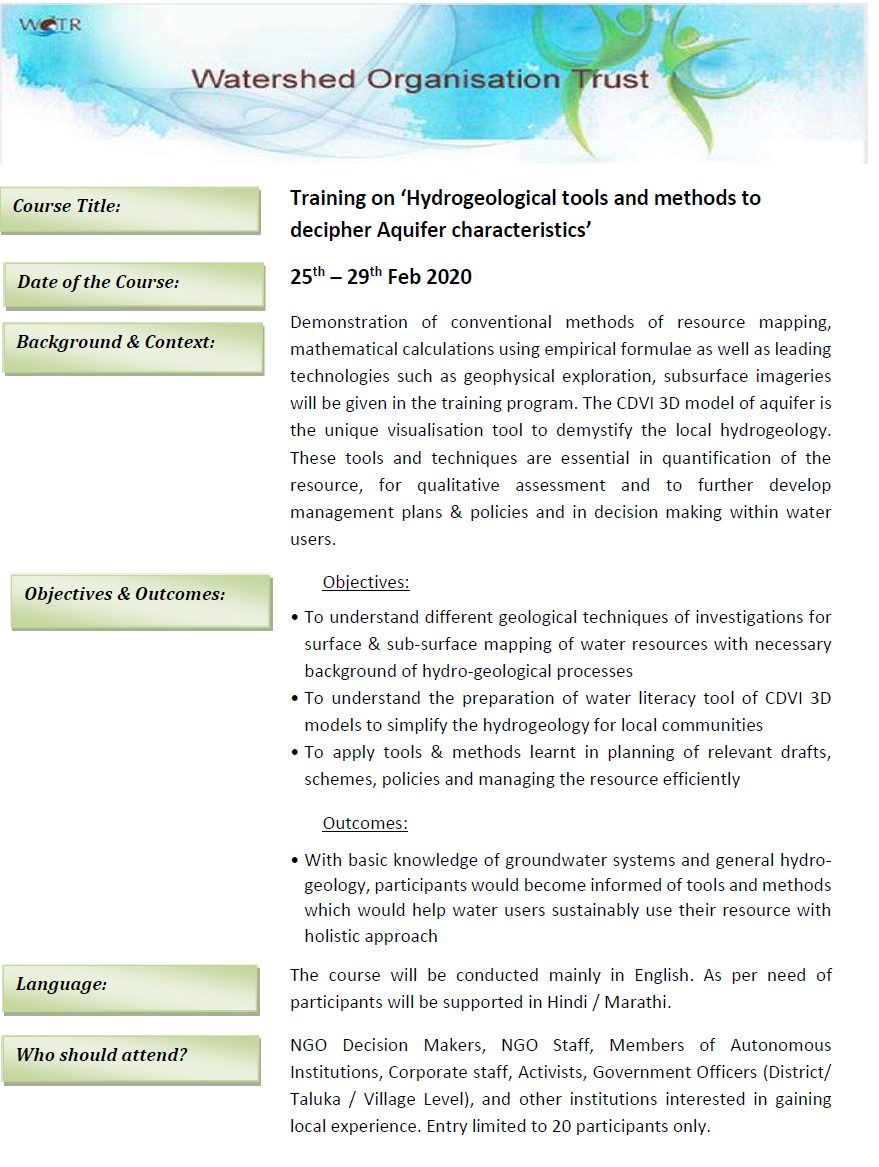/topics/shallow-aquifers
Shallow Aquifers
Perils, politics and prospects of groundwater in India
Posted on 05 Feb, 2020 03:15 PMAfter independence, India was largely food insecure but post Green Revolution around the 1970s, foodgrain production increased manifold consequently reducing food insecurity and poverty in the country, in spite of rapid population growth. Its ability to achieve targeted results was largely dependent on the explosion of groundwater abstraction mechanisms like tubewells.

Training on ‘Hydrogeological tools and methods to decipher Aquifer characteristics’
Posted on 23 Jan, 2020 05:13 PM

Groundwater variability: The tale of two states
Posted on 12 Jan, 2020 09:28 AMIndia, a groundwater stressed country

Looking back into history to understand droughts
Posted on 04 Dec, 2019 02:53 PMDroughts in India: types, causes and effects
Droughts are greatly feared in India, impacting food production, the economy and the livelihoods of millions of farmers. 60% of India’s population is engaged in agriculture.

Orientation Training on 'Aquifer Recharge in Rural and Urban areas'
Posted on 20 Nov, 2019 09:30 PMObjective of the event:
To orient participants on innovative borewell recharge method in rural areas as well as various methods of aquifer recharge in urban areas.
Target Participants:
Mapping Pune’s aquifers
Posted on 25 Oct, 2019 01:13 PMPune continues to face a water crisis every summer despite having sufficient water, thanks to its geographical location and plentiful natural water assets. While enough of its water needs are taken care of by water supply from the Khadakwasla dam, the use of groundwater to meet the needs of the population continues to increase.

From droughts to floods: India’s tryst with climate extremes
Posted on 01 Oct, 2019 11:54 AMIndia has witnessed extreme weather conditions this year. While parts of the north and south have battled drought like conditions this summer, the northeast and western coastal areas witnessed heavy rains and floods.

The Water Future Conference in Bangalore: Towards a Sustainable Water Future
Posted on 30 Sep, 2019 12:38 PMThe Water Future Conference in Bangalore last week, saw many from the scientific community, academia, research, civil society and the media come together to discuss the state of water resources across the world and in India, as well as future pathways and scenarios, and different technological a

How to restrict crops to geographically sustainable areas: The case of arecanut in Tumkur
Posted on 13 Sep, 2019 12:19 PMArecanut is generally grown in the Malnad area of Karnataka, which receives high rainfall. However, it is also grown in dry land areas of Tumkur district, also in Karnataka, using groundwater.

How local democracy is solving water issues in southern Rajasthan
Posted on 09 Sep, 2019 09:48 AMWhile most parts of the country are facing a water crisis, here’s a case from the arid state of Rajasthan, where decentralized initiatives are solving water issues. Dungarpur in southern Rajasthan has exemplified how community participation with local level planning processes are working towards improving rainwater harvesting and recharge of groundwater.




